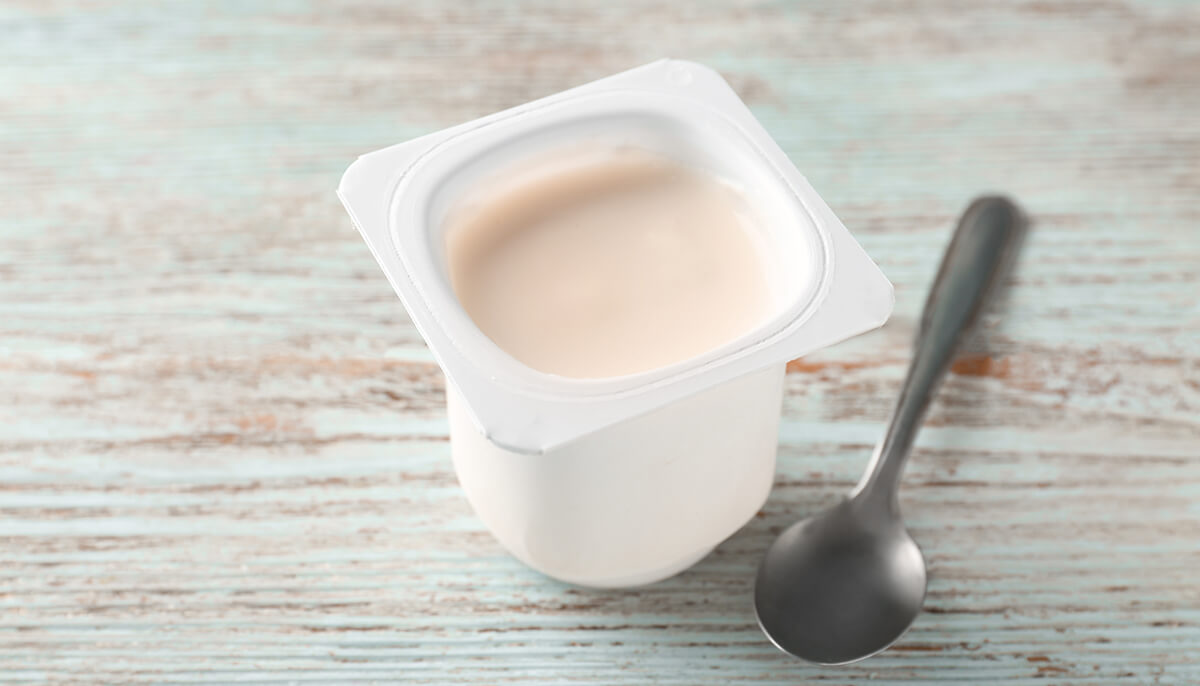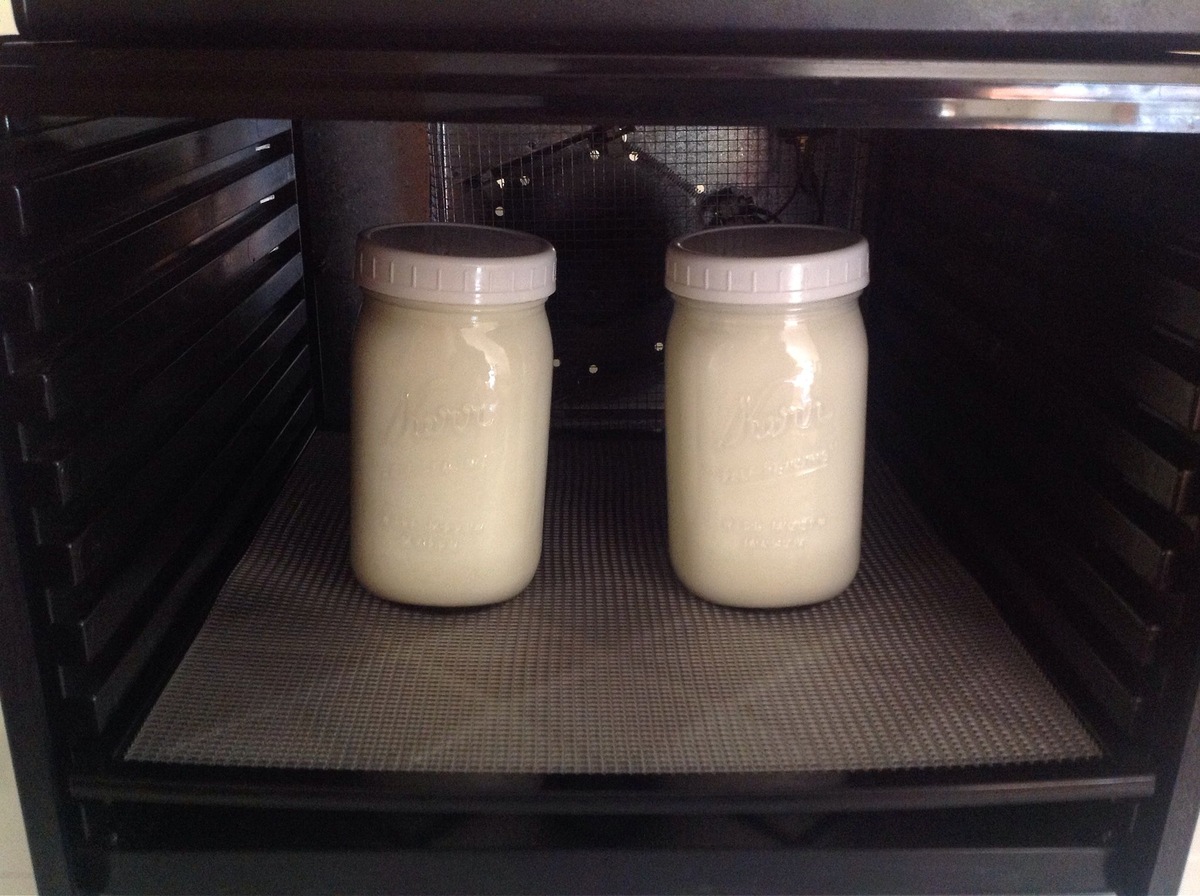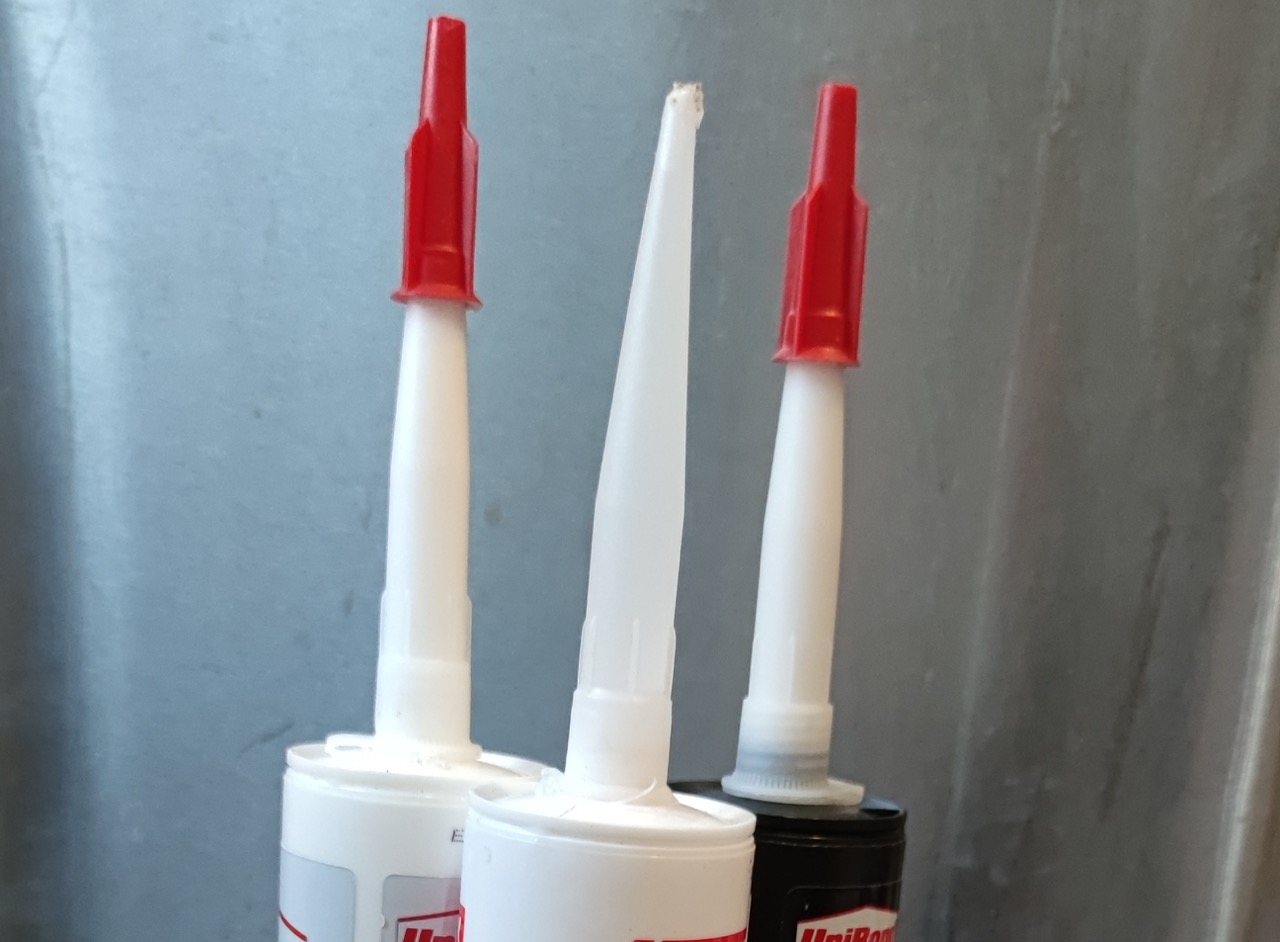

Articles
How To Store Opened Yogurt
Modified: December 7, 2023
Learn how to properly store opened yogurt to keep it fresh and delicious. Read our helpful articles for tips and tricks on prolonging the shelf life of your favorite yogurt flavors.
(Many of the links in this article redirect to a specific reviewed product. Your purchase of these products through affiliate links helps to generate commission for Storables.com, at no extra cost. Learn more)
Introduction
Welcome to the world of yogurt, a versatile and nutritious food loved by many. Whether you enjoy it as a snack, a breakfast option, or even as an ingredient in your favorite recipes, yogurt offers a wealth of health benefits. It is packed with essential nutrients like calcium, protein, and probiotics that promote gut health.
However, once you open a container of yogurt, it’s crucial to store it properly to maintain its freshness, flavor, and overall quality. Improper storage can lead to spoilage, bacterial growth, and a loss of texture and taste.
In this article, we will guide you through the process of storing opened yogurt to maximize its shelf life and ensure that you can continue to enjoy its benefits for as long as possible. We will explore the importance of proper storage, offer tips and techniques, and even discuss alternative methods for keeping your yogurt fresh.
So, whether you’re a yogurt lover or simply looking for ways to extend the longevity of your dairy products, read on to discover how to store opened yogurt effectively.
Key Takeaways:
- Properly storing opened yogurt is crucial for maintaining its freshness, flavor, and health benefits. Follow simple tips like refrigerating promptly and avoiding cross-contamination to enjoy delicious yogurt for longer.
- Alternative methods like freezing, making yogurt popsicles, or using yogurt in recipes can extend the shelf life of opened yogurt. Get creative and minimize waste while enjoying the versatility of yogurt.
Read more: How To Store Yogurt
Why is it important to store opened yogurt properly?
Properly storing opened yogurt is essential for several reasons, including maintaining its freshness, preserving its flavor, and preventing the growth of harmful bacteria. Here are a few key reasons why it is crucial to handle your yogurt with care:
- Freshness: Yogurt is a perishable food, and once it is exposed to the air, it becomes susceptible to spoilage. Proper storage helps slow down the growth of bacteria and maintains the freshness of the yogurt for an extended period. By doing so, you can enjoy the creamy, smooth texture and vibrant taste of yogurt even after opening the container.
- Flavor: Improperly stored yogurt can develop off-flavors due to exposure to other foods or odors in the refrigerator. Additionally, the growth of bacteria or mold can alter the taste of yogurt, making it unpleasant to consume. Storing yogurt properly helps preserve its original flavor profile, ensuring a delightful experience every time you indulge.
- Bacterial Growth: Yogurt contains live cultures, such as probiotics, that contribute to its health benefits. However, when exposed to certain conditions, these cultures can be compromised, leading to the growth of harmful bacteria. Storing yogurt at the right temperature and maintaining cleanliness reduces the risk of bacterial contamination, protecting both your health and the quality of the yogurt.
By paying attention to the proper storage of opened yogurt, you can extend its shelf life and maintain its quality, taste, and health benefits. Now, let’s explore some tips and techniques for storing opened yogurt to ensure its longevity and optimal enjoyment.
Tips for Storing Opened Yogurt
When it comes to storing opened yogurt, a few simple tips and techniques can go a long way in preserving its freshness and quality. Here are some helpful tips to ensure that your yogurt stays delicious and safe to consume:
- Refrigerate promptly: As soon as you open a container of yogurt, make sure to place it in the refrigerator immediately. The cool temperature of the fridge helps slow down the growth of bacteria and prevents spoilage. Aim to refrigerate the yogurt within two hours of opening to maintain its freshness.
- Use airtight containers: If the original yogurt container is not resealable, transfer the remaining yogurt into an airtight container. This helps protect it from exposure to outside odors, moisture, and air, which can affect the taste and texture. Glass or plastic containers with tight-fitting lids are great options for storing opened yogurt.
- Separate flavored and plain yogurt: If you have both flavored and plain yogurt, it’s best to store them separately. Flavored yogurt tends to have a stronger scent and flavor, which can potentially transfer to the plain yogurt if stored together. This helps maintain the integrity of the flavors and prevents any unwanted taste mixtures.
- Avoid cross-contamination: When storing opened yogurt, be mindful of cross-contamination with other food items in your refrigerator. Keep it away from strong-smelling foods like onions, garlic, or pungent cheeses. These odors can permeate the yogurt and impact its taste. It’s also a good practice to store yogurt on a different shelf or in a designated section to minimize any potential contact with uncooked or raw foods.
- Label and date: To keep track of the yogurt’s freshness, consider labeling the container with the date it was opened. This allows you to monitor its shelf life and ensures that you consume the yogurt within a reasonable timeframe. Most yogurt is safe to consume for 7-10 days after opening, but always check for any signs of spoilage or expiration.
- Do not freeze: Although yogurt can be frozen, it may undergo texture changes and separation when thawed. Freezing can cause the yogurt to become watery or grainy, affecting the overall quality. It’s best to consume yogurt within the recommended storage temperature range instead of freezing it.
By following these simple tips, you can maintain the freshness and quality of your opened yogurt, ensuring a delightful and healthy experience with every spoonful.
Storing Opened Yogurt in the Refrigerator
The refrigerator is the most common and convenient place to store opened yogurt. By following these steps, you can ensure that your yogurt stays fresh and delicious for as long as possible:
- Choose the right shelf: Select a spot in your refrigerator that maintains a consistent temperature. The middle or upper shelf is generally the best choice, as these areas experience less fluctuation in temperature compared to the door or lower shelves.
- Keep the yogurt away from the back of the fridge: While the back of the refrigerator is often the coldest spot, it can also experience temperature variations when the door is opened frequently. It’s best to keep the yogurt away from the back to avoid extreme temperature changes, which can shorten its shelf life.
- Store the yogurt upright: Place the yogurt container in the refrigerator in an upright position. This helps prevent any leakage or spills that could occur if the container is tilted or laid on its side. Keeping it upright also helps maintain the yogurt’s texture and consistency.
- Avoid direct exposure to light: Light exposure can degrade the quality of yogurt and cause it to spoil faster. Make sure that the yogurt container is not placed in direct sunlight or near bright artificial light sources. If the container is transparent, consider covering it with a cloth or placing it in a container that offers some light protection.
- Check the temperature: It’s important to ensure that the refrigerator temperature is set appropriately. The ideal temperature range for storing yogurt is between 36°F to 39°F (2°C to 4°C). Use a refrigerator thermometer to verify and adjust the temperature if needed.
- Monitor for signs of spoilage: Regularly check the yogurt for any signs of spoilage, such as an off-putting smell, mold growth, or changes in texture. If you notice any of these signs, discard the yogurt to avoid consuming spoiled food.
Following these guidelines for storing opened yogurt in the refrigerator will help maintain its quality and ensure that it remains safe to eat. However, if you find yourself unable to consume the yogurt within the recommended shelf life, there are alternative methods you can try to extend its storage time.
Store opened yogurt in an airtight container in the refrigerator. This will help prevent the yogurt from absorbing other odors and extend its shelf life.
Alternative Methods of Storing Opened Yogurt
If you’re unable to consume opened yogurt within its recommended shelf life or need to temporarily store it in different conditions, there are a few alternative methods you can try. Here are some options to consider:
- Freezing: While freezing yogurt is not recommended for long-term storage, it can be a viable option if you want to extend its shelf life for a short period. Before freezing, transfer the yogurt into a freezer-safe container, leaving some space for expansion. Frozen yogurt can last for up to one to two months. Keep in mind that the texture of frozen yogurt may change upon thawing, becoming slightly watery or grainy. Thaw the yogurt in the refrigerator and give it a good stir before consuming.
- Yogurt popsicles: If you have leftover yogurt that you won’t be able to consume before its expiration, consider turning it into delicious yogurt popsicles. Mix the yogurt with your favorite fruits, add a touch of honey or sweetener if desired, and pour the mixture into popsicle molds. Freeze until solid and enjoy a refreshing treat on a hot day.
- Yogurt-based dressings, dips, and sauces: If you have a significant quantity of yogurt to use up, consider incorporating it into homemade dressings, dips, or sauces. Yogurt can be a versatile base for a variety of recipes, adding a creamy and tangy element. Whip up a yogurt-based salad dressing, tzatziki sauce, or yogurt dip for fruits or vegetables. These preparations will not only utilize the yogurt but also extend its expiration date.
- Yogurt in baked goods: Another way to utilize leftover yogurt is by incorporating it into your baking endeavors. Yogurt can enhance the moisture and texture of baked goods like muffins, cakes, and bread. Simply substitute a portion of the liquid or oil in the recipe with an equal amount of yogurt. The result will be a moist and tender treat with the added benefits of yogurt’s nutrients.
- Share with others: If you find yourself with more opened yogurt than you can consume, consider sharing it with family, friends, or neighbors. Spread the yogurt love and prevent wastage by offering it to others who may be happy to enjoy it. Sharing not only minimizes food waste but also brings joy and community spirit.
These alternative methods allow you to extend the storage time of opened yogurt while getting creative with its use. However, always prioritize food safety and discard any yogurt that shows signs of spoilage or has exceeded its recommended shelf life.
Understanding the expiration dates on yogurt containers is also essential to ensure that you consume it before it spoils. Let’s explore more about yogurt expiration dates in the next section.
Read more: How To Store Frozen Yogurt
Understanding Yogurt Expiration Dates
Yogurt containers often come with expiration dates printed on them, providing guidance on the freshness and safety of the product. Understanding these expiration dates is important to ensure that you consume yogurt while it is still at its peak quality. Here are a few key points to consider:
- Sell-By Date: The sell-by date is a guide for retailers to know how long to display the yogurt for sale on their shelves. It is not an indication of the yogurt’s freshness or safety for consumption. You can typically purchase and consume yogurt safely beyond the sell-by date as long as it has been stored properly.
- Best-By Date: The best-by or use-by date is the manufacturer’s recommendation for consuming the yogurt for the best taste and quality. It signifies the period during which the yogurt is expected to be at its freshest. Consuming the yogurt before or around the best-by date will guarantee an optimal taste experience.
- Expiration Date: The expiration date is the end of the recommended shelf life for the yogurt. It indicates the point after which the manufacturer can no longer guarantee the quality and safety of the product. It is advisable not to consume yogurt past its expiration date to minimize the risk of foodborne illnesses.
It’s important to note that these dates are not set in stone, and the actual shelf life of yogurt can vary depending on various factors, such as storage conditions and the presence of any additives or preservatives. Proper storage in the refrigerator and regular checks for signs of spoilage are crucial in determining the freshness and edibility of yogurt.
If you find that the yogurt has passed its expiration date but appears and smells fine, you can perform a sensory evaluation to determine its quality. Take a small spoonful and assess the texture and taste. If the yogurt has a normal consistency, pleasant taste, and doesn’t show any signs of spoilage like off smells or mold growth, it may still be safe to consume within a reasonable timeframe post-expiration.
However, exercise caution and use your best judgment. If you notice any unusual characteristics, discard the yogurt to avoid the risk of foodborne illness. It’s always better to be safe than sorry when it comes to consuming dairy products.
By understanding yogurt expiration dates and making proper storage a priority, you can ensure that you consume yogurt at its freshest and maintain a safe and enjoyable eating experience.
Conclusion
Properly storing opened yogurt is essential to maintain its freshness, flavor, and quality. By following the tips and techniques provided in this article, you can extend the shelf life of your yogurt and continue to enjoy its health benefits for as long as possible.
Refrigerating opened yogurt promptly, using airtight containers, and keeping it away from strong-smelling foods are key steps in ensuring its longevity. Additionally, monitoring the refrigerator temperature and being vigilant for any signs of spoilage play crucial roles in maintaining the yogurt’s quality.
When faced with an abundance of yogurt or the need to store it beyond its recommended shelf life, alternative methods like freezing, using it in recipes, or sharing it with others can help reduce waste and maximize its usage.
Understanding yogurt expiration dates and conducting sensory evaluations can also guide you in determining if yogurt is still safe for consumption. While expiration dates provide general guidelines, proper storage, and personal judgment are essential to ensure safety and quality.
So, whether you’re a yogurt enthusiast looking to make the most of your opened containers or simply seeking to minimize food waste, implementing these storage practices will help you get the most out of your yogurt.
Remember, yogurt is not only delicious but also a nutritious addition to your diet. By storing it properly, you can continue to relish its creamy texture, tangy taste, and health benefits with every spoonful.
Now that you’re equipped with the knowledge and techniques for storing opened yogurt effectively, go ahead and apply these practices to enjoy fresh and delicious yogurt for longer periods of time.
Frequently Asked Questions about How To Store Opened Yogurt
Was this page helpful?
At Storables.com, we guarantee accurate and reliable information. Our content, validated by Expert Board Contributors, is crafted following stringent Editorial Policies. We're committed to providing you with well-researched, expert-backed insights for all your informational needs.















0 thoughts on “How To Store Opened Yogurt”